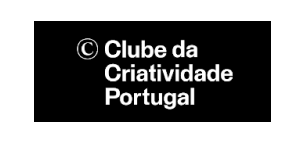With the shift from social media to video and the boom of Reels and TikTok, it seems
like the world has moved to double speed. And as a video editor, I had to follow up.
Now everything is faster, shorter, and much more demanding.
Three seconds.
That’s how long a video has to prove it deserves your attention.
Three seconds to grab you, pique your interest, and hopefully convince you to watch
until the end.
And that’s my job, to try to win that race. I create videos for social media, a space
where everything happens quickly and where attention lasts less than the blink of an
eye.
But what does this change in digital rhythm mean in practical terms? Let’s take it step
by step.
The hook
The first few seconds decide everything. Or you stay, or you move on.
That’s the most important moment, when I decide what to show you, what to hide from
you, and what to leave in your subconscious. With the right image, the cut at the right
moment, the sound that comes in at the perfect beat. Everything needs to be aligned to
grab your attention.
And now that I have your attention, what am I going to do with it?
The length
First, I have to get you to stop. Then, I have to get you to stay, and that’s the next
challenge. Telling a story in 20 or 30 seconds.
On social media, time is measured in seconds, not minutes. I know you’re in a hurry to
see what comes next, and next, and next. I don’t have much time to get my message
across, so I have to be direct and concise, in a way that captivates you and keeps you
interested.
The script must be short, the pace must be dynamic, the graphics must be striking, all
so that your brain remains entertained and eager to see more. In the end, what matters
is whether I left an impression, whether you will remember the story I wanted to tell
you.
The first victory is to win your attention, the second, your memory.
The format
This is the least obvious challenge: the format.
For years, we saw the world on wide screens: television, cinema, computers, all
designed horizontally with peripheral vision and lateral space to breathe. It was the
format that most closely resembled the way our eyes see the world.
Then came smartphones and, with them, the social media revolution.
Suddenly, video became vertical, focused, direct, without distractions. Suddenly,
everything that was once landscape became portrait. And what once took up the entire
screen in the living room now lives in the palm of your hand.
And that changes everything. Stories have become more intense, closer, more
personal, almost as if you were face to face with the person on the other side.
There’s no room for distractions: it’s just you, the content, and the time you decide to
spend.
When I think about all this, there’s something curious. I spend hours editing videos that
you’ll often watch in seconds. It may seem simple, but the secret lies in how to make
everything look spontaneous, when in fact I review, synchronize, and redo it over and
over again. And in the end, it may last only the blink of an eye. But there’s no
frustration in that.
There’s something beautiful about creating for the ephemeral. I like trying to figure out
what makes someone stop and watch until the end, because, deep down, that’s what
it’s all about: creating something that piques your curiosity in a feed full of things
competing for your attention.
If my video makes you stop for a few seconds, mission accomplished.
And if you still remember it after you keep scrolling… well, that’s the jackpot.
By Lia Lopes, Motion Designer



